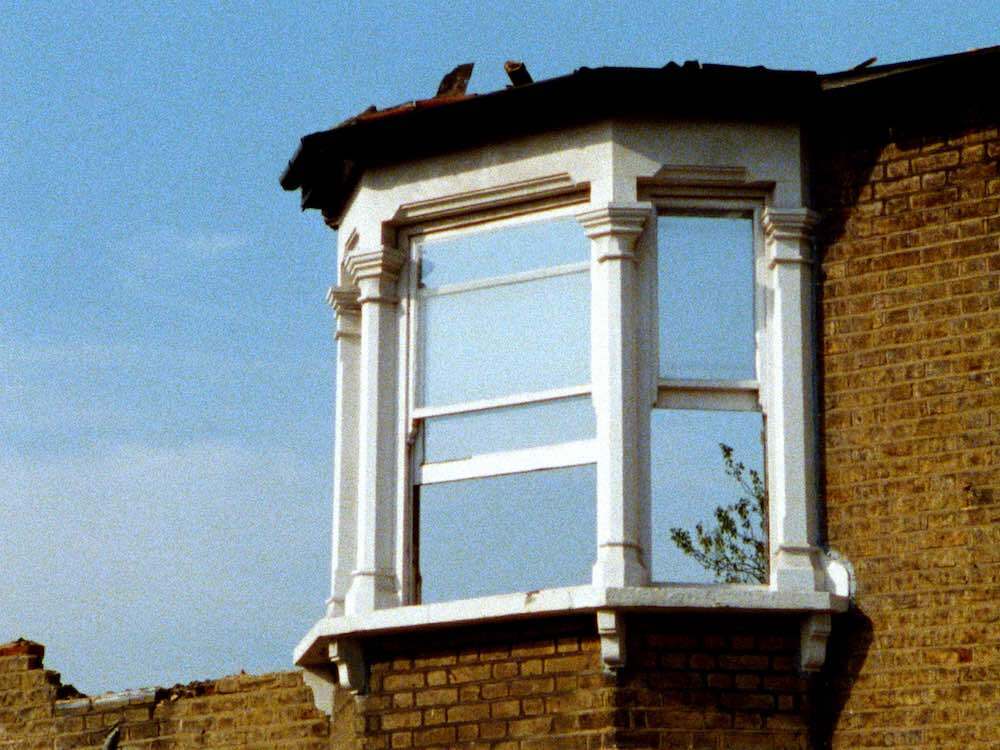‘We cling, but it is you who fear, who must be kept apart from members of your species who are not your family. We rest our edges on walls of bricks, transferring our load, the load of you and your possessions. You have no plan for us after this. Your thoughts will crumble with us.’
Catriona Shine, Habitat
In Catriona Shine’s 2024 novel Habitat, a stylish mid-century apartment building in Oslo decides to fall apart. It has had enough, after decades of bearing the weight of middle-class greed and malice. Party walls bulge out, basement flats sink deep into the soil, and roofs begin to let rain and bird droppings through at will. Within a week, the expensive property collapses and vanishes completely – its self-absorbed flat owners fall through sagging floors and find themselves in the wreckage of their habitat.
While the nightmare of disintegrating homes caused by social inequalities and human wrongdoings remains a satirical allegory in Shine’s story, it becomes the bitter reality confronted by the films of ‘Housing Problems’. Made between the 1930s and 2023, the eight films record and respond to various communities’ housing struggles in the UK. From slum residents who fought for new social housing, squatters who defended their homes against illegal eviction, to migrant renters who rallied for affordable and safe living environments, the protagonists of films face up to hostile housing situations that have put their lives in jeopardy.
The films of ‘Housing Problems’ all spring from activist efforts to reveal why spaces that are expected to provide shelter and relief turn out to endanger those who live there. Prejudiced policies, such as the hostile environment policy interrogated in Hostile Housing (2020), restricted renters’ access to reasonably priced homes. Sloppy designs and dismissive local authority result in purpose-built flat compounds that are, in fact, detrimental to residents’ health (Dampbusters, 2021). Planning decisions that are neglectful of local needs and protests threaten the safety and wellbeing of a housing estate community in Murchison Tenants (1970s).
The collapse of home spaces – sometimes literal and sometimes metaphoric – documented by the films of the programme reflects social inequality and hostility, which underlie the persistence of housing issues across different historical periods. In Realist Film Unit’s 1935 film Housing Problems, workers and their families huddle in unhygienic old flats that are falling apart. The bulging walls and decaying roofs visualise what living on thin ice means. With duct tapes and empty cardboard boxes, Agnieszks in Hostile Housing reenacts the precarity of living in a temporary accommodation. To live as a migrant renter, hopping between short-let flats, is like living in an easily crushed shoe box. Through these films’ representation of spaces, the hardship of underprivileged communities in a society where the uneven distribution of resources becomes strikingly apparent
To make vivid the vulnerability of these violated domestic spaces and their disregarded residents, filmmakers experimented with visual and sound techniques. Blight (1996), for example, breaks interviews with local residents into individual sentences, phrases and even single words. A response to local resistance against the construction of the M11 Link Road in East London, the film incorporated speech fragments and noises of destruction to create an eerily broken soundtrack that almost resembles a pile of smashed glass. The poetic yet unsettling echo between the soundtrack and the silent ruins of residential buildings, captured on 16mm film, is imbued with the poignance of forced displacement. In Squatters, made in 1969 by the film collective Cinema Action, a montage sequence zooms in on the very moment when a bailiff company broke into a squatted property. The sequence edits together photos, stills and short clips that stand witness to the violent vandalism. These fragmented visual documents flash up on the screen, heightening a sense of emergency and destruction. Several frames are enlarged and reversed repeatedly to emphasise the traumatic disorder caused by the eviction.
The practice of making short films provides an empowering tool for community groups and activists to create space for themselves, when their physical living space is under threat. The makers of the ‘Housing Problems’ films are often themselves active members of the communities they documented. Although each of the films grows out from a unique context and revolves around specific housing issues, film is a shared medium that allows all their protagonists’ anger and despair to be seen, heard, and discussed. Since the early 20th century, more and more self-organised film productions have emerged, as filmmaking devices and means of dissemination become increasingly available on the mass market. The arena of moving-image thus no longer belongs exclusively to professional or government-affiliated filmmakers. Rather, community members amplify their marginalised voices through grassroot practice and ‘even up the playing field’, as put by video activist Sue Hall, who co-made Squat Now Whilst Stocks Last (1974).
Driven by community causes, some of the films featured in ‘Housing Problems’ demonstrate the possibility of transversing the borderlines drawn between the spaces of art, community work, politics, and life. Hostile Housing integrates elements of performance art and community organising to assert the urgent need for improved housing policies. Animation and 3D rendering interact with archival materials, theatre art, and socially-engagement practices in Dampbuster and raise questions about both the history and future of housing crises. While the perspective and purpose of these films diverge, they similarly puncture the boundaries of disciplinary spaces, calling out for immediate action.
